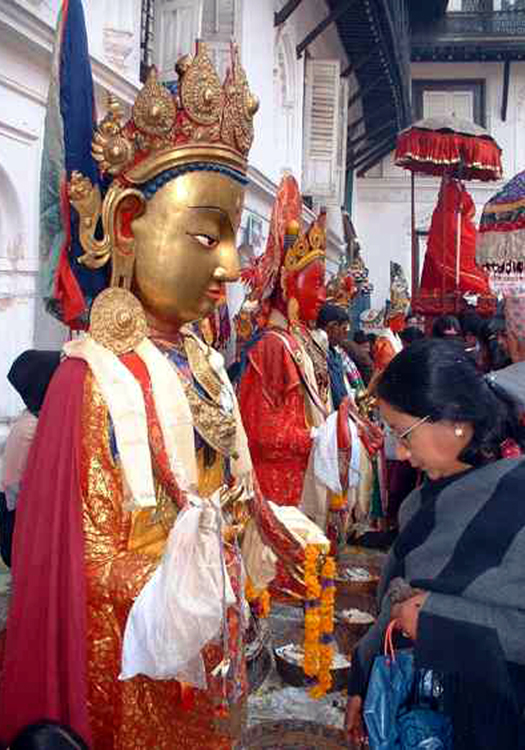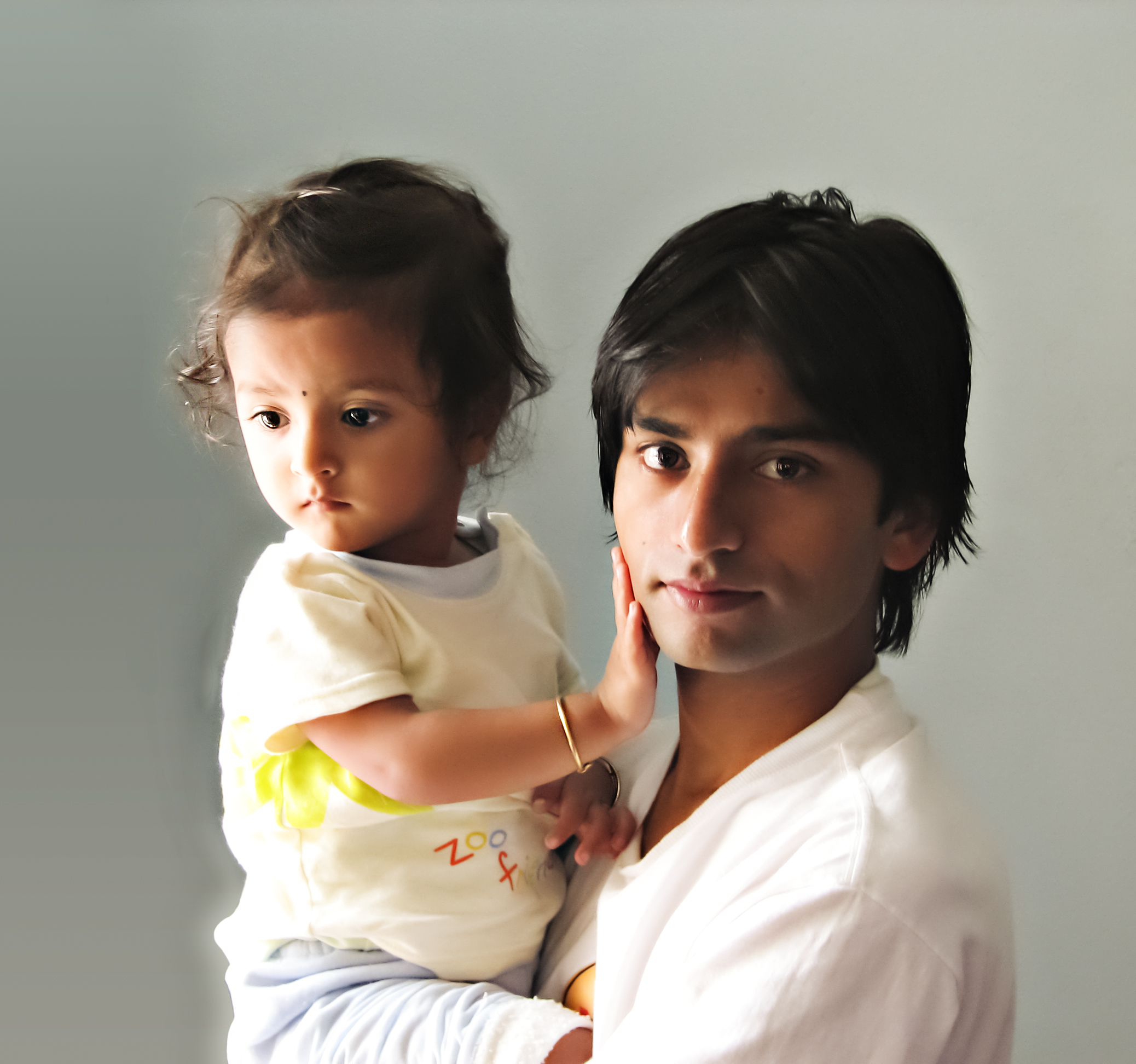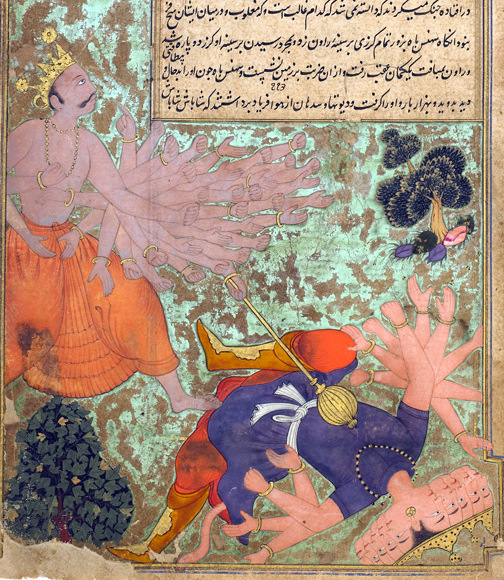|
Tamrakar
Tāmrakār (Devanagari: ताम्रकार) is a caste of coppersmiths and other metal casters found in Nepal and India. In Nepal, the Tamrakars are found among the Newar community of the Kathmandu Valley. Etymology and names The name Tamrakar is derived from the Sanskrit words "tamra", meaning copper, and "kaar", refers to maker, worker In Nepal Bhasa, they are known as Tamo (Tamrakar from Patan) or Tamot or Tawo (Tamrakar from Kathmandu). They are skilled craftsmen with a distinct culture among Newars. They follow both Hinduism & Buddhism. In India, the various names for the caste include Tamrakar (in Madhya Pradesh), Tambatkar, Tamera, Thathera, Thathara, Kasar, Kasera, Kansara (in Gujarat), Kangabanik (West Bengal), Otari, Twasta Kasar and Tambat (Maharashtra), Tamta (Gharwal & kumaon). In Goa, they claim Brahmin status and call themselves Twashta Kasar Brahmin. In northern India, they also identify themselves as "Haihaivanshi Tamrakar Samaj", claiming Kshatriya des ... [...More Info...] [...Related Items...] OR: [Wikipedia] [Google] [Baidu] |
Newar
Newar (; new, नेवार, endonym: Newa; new, नेवा, Pracalit script:) or Nepami, are the historical inhabitants of the Kathmandu Valley and its surrounding areas in Nepal and the creators of its historic heritage and civilisation. Page 15. Newars form a linguistic and cultural community of primarily Indo-Aryan and Tibeto-Burman ethnicities following Hinduism and Buddhism with Nepal Bhasa as their common language. Newars have developed a division of labour and a sophisticated urban civilisation not seen elsewhere in the Himalayan foothills. Newars have continued their age-old traditions and practices and pride themselves as the true custodians of the religion, culture and civilisation of Nepal. Newars are known for their contributions to culture, art and literature, trade, agriculture and cuisine. Today, they consistently rank as the most economically and socially advanced community of Nepal, according to the annual Human Development Index published by UNDP. Nep ... [...More Info...] [...Related Items...] OR: [Wikipedia] [Google] [Baidu] |
Uray (caste Group)
Urāy ( ne, उरे) (alternative names: Udaaya, Udās) is a Newar Buddhist merchant caste of Kathmandu in Nepal. They are a prominent community in the business and cultural life of Kathmandu. Urays have played key roles in the development of trade, industry, art, architecture, literature and Buddhism in Nepal and the Himalayan region. The name Uray is said to have been derived from the Sanskrit term "upāsaka" which means "devout layman". The Uray follow Newar Buddhism and speak the Newar language as their mother tongue. They are believers in non-violence in personal relations and ritual practices. History An early reference to the Uray is contained in a 17th-century journal kept at the Buddhist monastic courtyard of Jana Baha, Kathmandu. Dated Nepal Sambat 763 (1643 AD), the journal entry states that King Laxmi Narsingh Malla has asked all the Urays to attend a religious service at Asan. Urays are also known for their history as traders on the Silk Road. Operating out of ... [...More Info...] [...Related Items...] OR: [Wikipedia] [Google] [Baidu] |
Samyak
Samyak ( ne, सम्यक) is an almsgiving Buddhist festival celebrated in the Kathmandu Valley in Nepal. During the ceremony which is held on a large open ground, hundreds of Dīpankara Buddha images are assembled, and gifts of different types of food are made to the Buddha images and the Buddhist community. Samyak is the most spectacular Newar Buddhist celebration. It is observed at different intervals in the three cities of the valley -- every 12 years in Kathmandu, every five years in Lalitpur and annually in Bhaktapur. The first documented Samyak festival in Kathmandu took place in 1015 AD (135 Nepal Era). The festival brings together a wide cross-section of Newar society, including priests, artisans, traders, musicians and farmers. Each group has a defined role designed to highlight social harmony. The ceremony celebrates the practice of giving to the Buddhas and monks in the Newar Buddhist tradition. The Samyak festival in Kathmandu is held at Kathmandu Durbar Sq ... [...More Info...] [...Related Items...] OR: [Wikipedia] [Google] [Baidu] |
Twashta Kasar
Twashta Kasar (also known as Tambat or Kasar) is a Hindu artisan caste of coppersmiths ( tamrakar and tamta), predominantly residing in the Indian state of Maharashtra. In Goa, they call themselves ''Twashta Kasar Brahmin''. According to Herbert Hope Risley, they are a branch of the Suvarna Banik, who became degraded because they took to working in metal. They are included in the Other Backward Class category by the Government of Maharashtra. Traditions The primary religion of Twashta Kasar is Hindu. The community worships Kalika as a guardian deity (Palak Devta). They have established "Twashta Kasar Samaj Samstha Kalika Mandir" in every city wherever they have a sizable population. The Samaj Samstha is a community center where they organize events. In Pune, the community has been celebrating Ganeshotsav Ganesh Chaturthi ( ISO: ), also known as Vinayak Chaturthi (), or Ganeshotsav () is a Hindu festival commemorating the birth of the Hindu god Ganesha. The festival is m ... [...More Info...] [...Related Items...] OR: [Wikipedia] [Google] [Baidu] |
Thathera
The Thathera is a Hindu and Sikh artisan caste in India, who traditional occupation is the making of brass and copper utensils. In 2014, the craft of the Thathera community of Jandiala Guru were included in UNESCO’s List of Intangible Cultural Heritage. Present circumstances The Thathera community are divided into 47 clans. The main ones are Chauhan, Parmar, Gohil, Mahecha Rathod, Vadher, Solanki, Bhatti, khasi, Kagda and Puvar . In Uttar Pradesh, they are found mainly in Lalitpur, Jalaun, Banda, Kanpur, Lucknow, Mirzapur and Indore M.p also In Bihar, they are found in the districts of Patna, Nalanda, Gaya, Nawada, Bhagalpur, Muzaffarpur, Munger, Purnea, Begusarai, Katihar, Khagaria, and Madhubani. The Bihar Thathera are divided into a number of exogamous clans such as the Chandrahar, Chaswar, Mirdang, Amarpallo, and Peswa. The Thathera are basically a community of artisans. Metal work, business and repair of utensils are their traditional occupations. Many of them ev ... [...More Info...] [...Related Items...] OR: [Wikipedia] [Google] [Baidu] |
Kathmandu Darbar0854
, pushpin_map = Nepal Bagmati Province#Nepal#Asia , coordinates = , subdivision_type = Country , subdivision_name = , subdivision_type1 = Province , subdivision_name1 = Bagmati Province , subdivision_type2 = District , subdivision_name2 = Kathmandu , established_title = , founder = Manjushri , parts_type = No. of Wards , parts = 32 , seat_type = , seat = , government_footnotes = , government_type = Mayor–council government , governing_body = Kathmandu Metropolitan Government, , leader_title = Mayor , leader_name = Balendra Shah ( Ind.) , leader_title1 = Deputy mayor , leader_name1 = Sunita Dangol (UML) , leader_title2 = Executive Officer , leader_name2 = Basanta Adhikari , unit_pref = ... [...More Info...] [...Related Items...] OR: [Wikipedia] [Google] [Baidu] |
Caste System In Nepal
The Nepalese caste system was the traditional system of social stratification of Nepal. The Nepalese caste system broadly borrows the classical Hindu ''Chaturvarnashram'' model, consisting of four broad social classes or varna: Brahmin, Kshatriya, Vaishya, Sudra. The caste system defines social classes by a number of hierarchical endogamous groups often termed ''jaat''. This custom was traditionally only prevalent in the three Indo Aryan societies of the Khas, Madhesi, and Newars. However, since the unification of Nepal in the 18th century, Nepal's various non-Hindu ethnic nationalities and tribes, previously called "Matwalis" (alcohol-drinkers) and now termed as "Adivasi/Janajati" (indigenous/nationalities), have been incorporated within the caste hierarchy to varying degrees of success. Despite the forceful integration by the state into the pan-Hindu social structure, the traditionally non-Hindu groups and tribes do not necessarily adhere to the customs and practices of the cas ... [...More Info...] [...Related Items...] OR: [Wikipedia] [Google] [Baidu] |
Indian Caste System
The caste system in India is the paradigmatic ethnographic example of classification of castes. It has its origins in ancient India, and was transformed by various ruling elites in medieval, early-modern, and modern India, especially the Mughal Empire and the British Raj. It is today the basis of affirmative action programmes in India as enforced through its constitution. The caste system consists of two different concepts, ''varna'' and '' jati'', which may be regarded as different levels of analysis of this system. Based on DNA analysis, endogamous i.e. non-intermarrying Jatis originated during the Gupta Empire. Our modern understanding of caste as an institution in India has been influenced by the collapse of the Mughal era and the rise of the British colonial government in India. The collapse of the Mughal era saw the rise of powerful men who associated themselves with kings, priests and ascetics, affirming the regal and martial form of the caste ideal, and it also r ... [...More Info...] [...Related Items...] OR: [Wikipedia] [Google] [Baidu] |
Haihayas
The Heheya Kingdom (also known as Haihaya, Haiheya, Heiheya _sa.html" ;"title="nowiki/> sa">हैहय was a kingdom ruled by the Yadava people, who claimed to be descended from Yadu, a legendary king of Chandravamsha lineage. One of the most well known Haihaya rulers was Kartavirya Arjuna. It is believed that the Kingdom was involved with a number of conflicts with neighboring kingdoms, and it is believed that it was ultimately defeated by the Bhargava leader Parashurama. The capital of the Heheya Kingdom was Mahishmati, located on the banks of the Narmada River in present-day Madhya Pradesh. Haihaya clans The Haihayas were an ancient confederacy of five ''gana''s (clans), who claimed their common ancestry from Yadu. According to the ''Harivamsha Purana'' (34.1898), Haihaya was the great-grandson of Yadu and grandson of Sahasrajit.Pargiter, F.E. (1972) 922 ''Ancient Indian Historical Tradition'', Delhi: Motilal Banarsidass, p.87. In the ''Vishnu Purana'' (IV.11), all t ... [...More Info...] [...Related Items...] OR: [Wikipedia] [Google] [Baidu] |
Caste
Caste is a form of social stratification characterised by endogamy, hereditary transmission of a style of life which often includes an occupation, ritual status in a hierarchy, and customary social interaction and exclusion based on cultural notions of purity and pollution. * Quote: "caste ort., casta=basket ranked groups based on heredity within rigid systems of social stratification, especially those that constitute Hindu India. Some scholars, in fact, deny that true caste systems are found outside India. The caste is a closed group whose members are severely restricted in their choice of occupation and degree of social participation. Marriage outside the caste is prohibited. Social status is determined by the caste of one's birth and may only rarely be transcended." * Quote: "caste, any of the ranked, hereditary, endogamous social groups, often linked with occupation, that together constitute traditional societies in South Asia, particularly among Hindus in India. Althoug ... [...More Info...] [...Related Items...] OR: [Wikipedia] [Google] [Baidu] |
Sikkim
Sikkim (; ) is a state in Northeastern India. It borders the Tibet Autonomous Region of China in the north and northeast, Bhutan in the east, Province No. 1 of Nepal in the west and West Bengal in the south. Sikkim is also close to the Siliguri Corridor, which borders Bangladesh. Sikkim is the least populous and second smallest among the Indian states. Situated in the Eastern Himalaya, Sikkim is notable for its biodiversity, including alpine and subtropical climates, as well as being a host to Kangchenjunga, the highest peak in India and third highest on Earth. Sikkim's capital and largest city is Gangtok. Almost 35% of the state is covered by Khangchendzonga National Park – a UNESCO World Heritage Site. The Kingdom of Sikkim was founded by the Namgyal dynasty in the 17th century. It was ruled by Buddhist priest-kings known as the Chogyal. It became a princely state of British India in 1890. Following Indian independence, Sikkim continued its protectorate status with ... [...More Info...] [...Related Items...] OR: [Wikipedia] [Google] [Baidu] |
Sino-Indian War
The Sino-Indian War took place between China and India from October to November 1962, as a major flare-up of the Sino-Indian border dispute. There had been a series of violent border skirmishes between the two countries after the 1959 Tibetan uprising, when India granted asylum to the Dalai Lama. Chinese military action grew increasingly aggressive after India rejected proposed Chinese diplomatic settlements throughout 1960–1962, with China re-commencing previously-banned "forward patrols" in Ladakh after 30 April 1962. Amidst the Cuban Missile Crisis, China abandoned all attempts towards a peaceful resolution on 20 October 1962, invading disputed territory along the border in Ladakh and across the McMahon Line in the northeastern frontier. Chinese troops pushed back Indian forces in both theatres, capturing all of their claimed territory in the western theatre and the Tawang Tract in the eastern theatre. The conflict ended when China unilaterally declared a ceasefire o ... [...More Info...] [...Related Items...] OR: [Wikipedia] [Google] [Baidu] |










